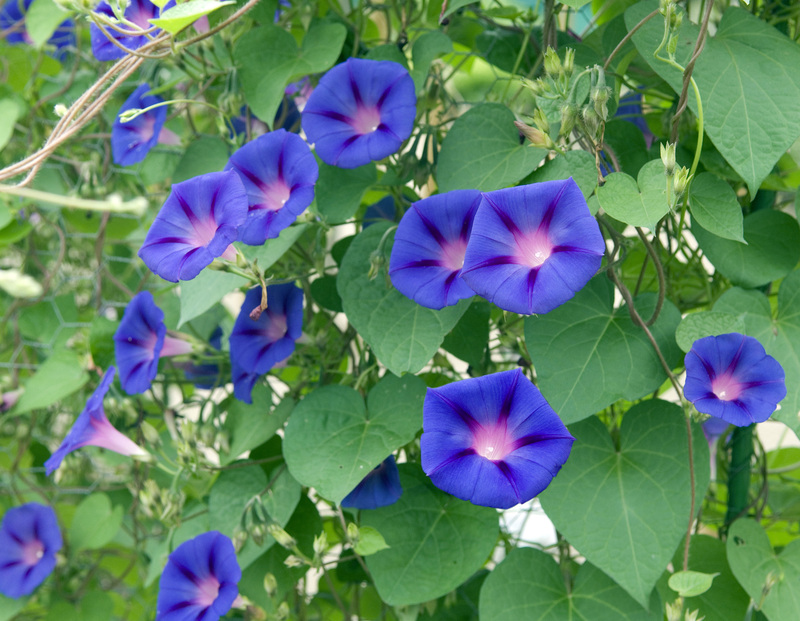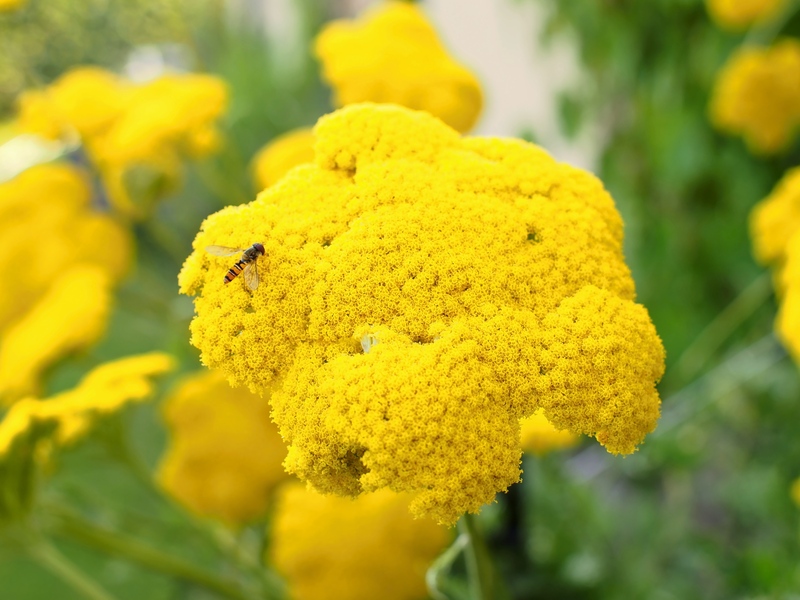Crafting Beauty from Neglect: The Garden Renaissance
Posted on 28/05/2025
Crafting Beauty from Neglect: The Garden Renaissance
The Awakening: Rediscovering Abandoned Gardens
Many of the world's most charming green spaces were once little more than forgotten corners, brimming with weeds, crumbling stone, and overgrown brambles. Today, an inspiring movement is breathing new life into these neglected plots, transforming decay into picturesque landscapes. This resurgence--often called the garden renaissance--demonstrates how vision, dedication, and creativity can craft beauty from neglect.

What is the Garden Renaissance?
The term garden renaissance refers to the process of reviving neglected, forgotten, or abandoned gardens and outdoor areas. Passionate individuals and communities are reclaiming these lost spaces, turning them into thriving sanctuaries rich in biodiversity, culture, and beauty. Underneath the matted grass and tangled vines, the soul of these gardens waits to be rediscovered.
Origins of the Movement
The roots of the modern garden renaissance can be traced to several key developments:
- The urban gardening movement, driven by city dwellers seeking green spaces amid concrete jungles
- The rise of community gardens, revitalizing vacant lots into sources of food and togetherness
- Growing awareness of biodiversity loss and the importance of green spaces for climate resilience
- Historic garden restoration projects bringing old estates and public parks back to their former glory
Why Turn Neglect Into Beauty?
Transforming neglected spaces isn't just about aesthetics. There are compelling reasons behind this outdoor renaissance:
- Environmental Health: Restored gardens boost local ecosystems, offering habitats for pollinators and wildlife.
- Community Well-being: Green spaces foster camaraderie, relaxation, and improved mental health for residents.
- Historical Preservation: Reviving heritage gardens safeguards important cultural legacies.
- Urban Renewal: Neglected land becomes a green lung, improving air quality and urban livability.
- Creativity: The process inspires creativity, as each garden tells a unique story through its rebirth.
Key Steps to Crafting Beauty from Neglect
1. Assessment and Imagination
Begin your garden revival by thoroughly assessing the space:
- Identify sources of neglect: Is it overrun with weeds? Are there hardscape features in disrepair?
- Map existing plants, many of which may surprise you with their resilience and beauty.
- Imagine the potential. Let your creativity roam as you envision transformation.
2. Clearing and Preservation
The next phase is both restorative and delicate:
- Remove debris and invasive species, being careful to preserve valuable plant life or old architectural features.
- Document interesting finds, such as heirloom roses or antique garden ornaments.
- Consider soil testing to guide future plantings and ensure a healthy garden bed.
3. Planning the New Garden Landscape
With a clean slate, strategic planning is essential:
- Choose a design theme: formal, wildflower, food forest, or pollinator-friendly, to create a cohesive space.
- Sketch layout ideas for beds, paths, seating areas, and focal points.
- Prioritize sustainability: use native plants, rainwater harvesting, and eco-friendly materials.
- Plan for seasonal interest, integrating plants that bloom or display color year-round.
4. Restoration and Planting
Now comes the hands-on work of turning neglect into flourishing beauty:
- Rehabilitate neglected trees, shrubs, or perennials if possible, recognizing their established value.
- Add layers with new plantings--groundcovers, bulbs, annuals, and perennials for structure and diversity.
- Install hardscape features as needed: paths, benches, trellises, or restored water fountains.
- Apply mulch generously to suppress weeds and retain moisture.
5. Ongoing Care and Community Involvement
The renaissance doesn't end once the last flower is planted:
- Commit to regular maintenance: weeding, pruning, composting, and watering.
- Invite community members to join--shared stewardship ensures sustainability and sparks new friendships.
- Host events like plant swaps, workshops, or communal dinners to celebrate the rebirth of the garden.
Inspiring Examples of Garden Revivals
Historic Estates and Formal Gardens
Across Europe and North America, garden restoration experts are breathing new life into the grand estates of the past. For instance, the restoration of the Lost Gardens of Heligan in England stands as a global symbol of the garden renaissance. Thought lost after World War I, these Victorian gardens lay in ruin for decades before a passionate team cleared the overgrowth, pruned century-old trees, and uncovered forgotten features like the Italian Garden and the iconic Mud Maid sculpture.
Urban Community Gardens
In cities worldwide, neglected lots are morphing into vibrant community gardens. These spaces provide fresh produce, foster neighborhood resilience, and create oases of beauty in the urban landscape. Notable examples include:
- New York's 6th & B Garden: Once an abandoned lot, it's now a lush hub for local residents and pollinators.
- Detroit's Michigan Urban Farming Initiative: Transforming blighted city blocks into abundant food forests and educational sites.
Personal Backyard Transformations
Countless homeowners have experienced the joy of revitalizing a neglected backyard. Whether it's coaxing blooms from a weed-choked plot or restoring a forgotten garden pond, these transformations often become beloved family retreats and sources of pride.
Garden Renaissance: Tips and Best Practices
Anyone can participate in this renaissance of garden beauty. Here are some expert recommendations for crafting beauty from neglect:
- Start Small: Tackle a manageable section first to avoid feeling overwhelmed.
- Respect What's There: Mature trees, old bricks, or even wild plants can be stunning assets.
- Go Native: Favor plants suited to your local climate for low-maintenance beauty and ecological harmony.
- Compost Onsite: Turn organic debris into rich fertilizer for your new planting beds.
- Invite Nature: Install birdhouses and pollinator hotels to support wildlife.
- Document the Journey: Take before-and-after photos--it will inspire others to start their own garden revival.
Common Challenges and How to Overcome Them
Restoring neglected gardens isn't without hurdles. Among the most common:
- Poor Soil: Address with organic matter, compost, and mulch.
- Persistent Weeds: Suppress with dense plantings or sheet mulching methods.
- Lack of Time: Involve neighbors, local schools, or volunteer groups for shared upkeep.
- Budget Constraints: Swap plants, seeds, and materials with others, or start a community fundraiser.
Benefits: Beyond the Beauty
The impact of restoring neglected gardens goes far beyond aesthetics. Garden renaissance projects offer a wealth of practical and emotional rewards:
- Enhanced Biodiversity: New and restored plantings create habitats for birds, insects, and urban wildlife.
- Increased Property Value: An attractive garden can boost curb appeal and home value.
- Stress Reduction: Gardeners and visitors alike reap the mental health benefits of green spaces and outdoor activity.
- Educational Opportunities: Gardens serve as outdoor classrooms for learning about nature, sustainability, and history.
- Food Security: Community gardens can provide much-needed fresh food in urban food deserts.

How to Start Your Own Garden Renaissance
Curious about crafting beauty from neglect in your own backyard or neighborhood? Follow these steps for your own green transformation:
- Scout Potential Sites: Identify private or public spaces that could benefit from restoration.
- Rally Support: Gather like-minded individuals to share inspiration and responsibilities.
- Seek Permissions: If working on public or communal land, secure the necessary approvals.
- Plan and Document: Outline your goals, timeline, and preferred plantings. Keep a photo diary to track progress.
- Celebrate Success: Organize an unveiling or garden party to honor the hard work and beauty now on display!
Remember: Every garden renaissance starts with one small, dedicated effort.
The Future of Garden Transformation: An Ongoing Renaissance
As climate pressures mount and urban sprawl increases, the value of reviving and protecting green spaces becomes ever clearer. Crafting beauty from neglect is more than just an aesthetic pursuit--it is a meaningful act of hope, resilience, and stewardship. The garden renaissance is here to stay, inspiring new generations to see potential where others see waste, and to transform the overlooked into landscapes of living beauty.
Join the Renaissance Today!
Let the story of renewed gardens ignite your imagination and your passion for change. No space is too small, no plot too far gone--every seed you plant helps to shape a greener, more vibrant world. Whether you're restoring an urban community lot or breathing new life into your own backyard, you are part of a proud tradition: crafting lasting beauty from the ashes of neglect.
Embrace the garden renaissance. Transform neglect into beauty. And watch as the rebirth of your garden brings joy, wonder, and life to your world.

